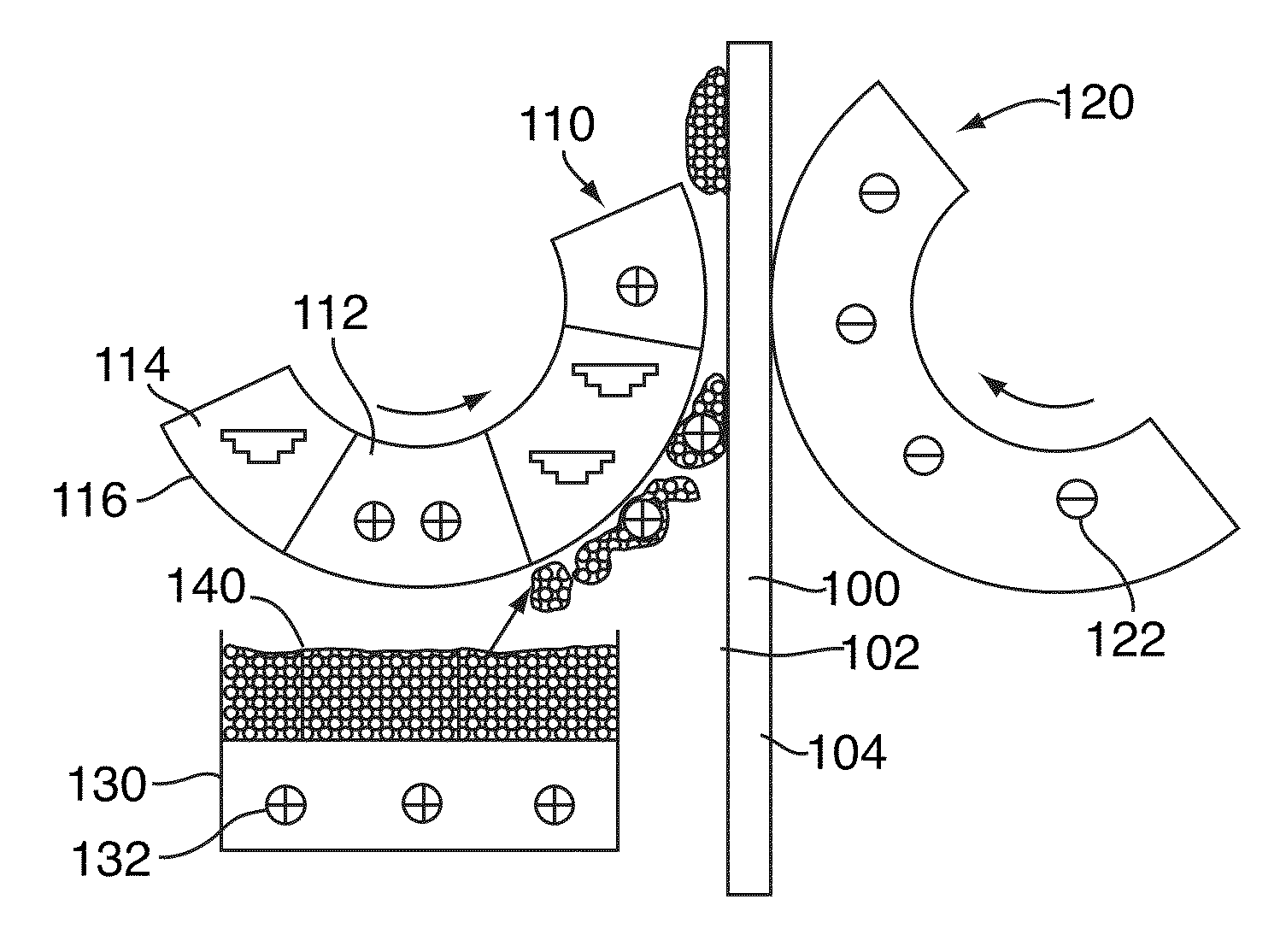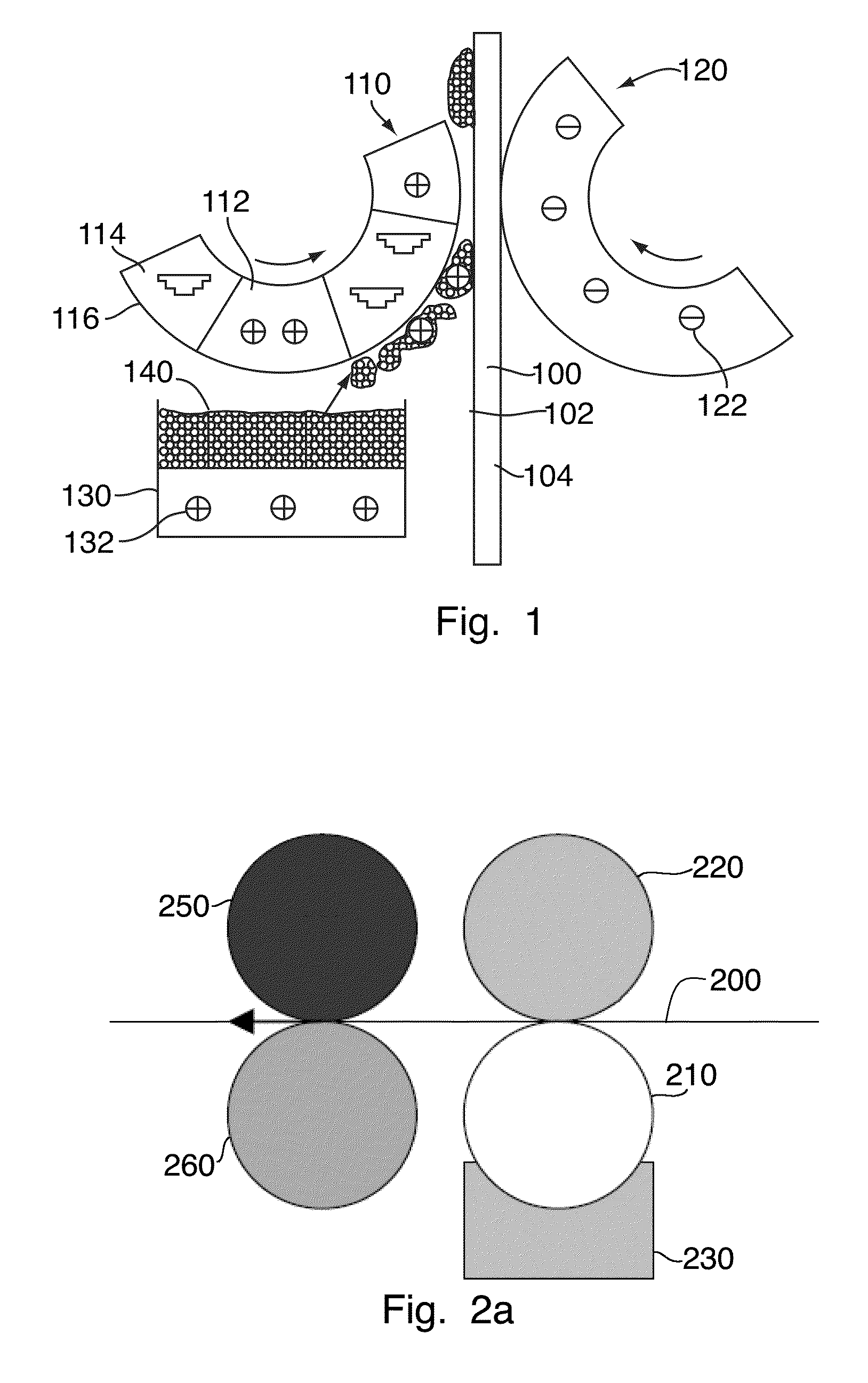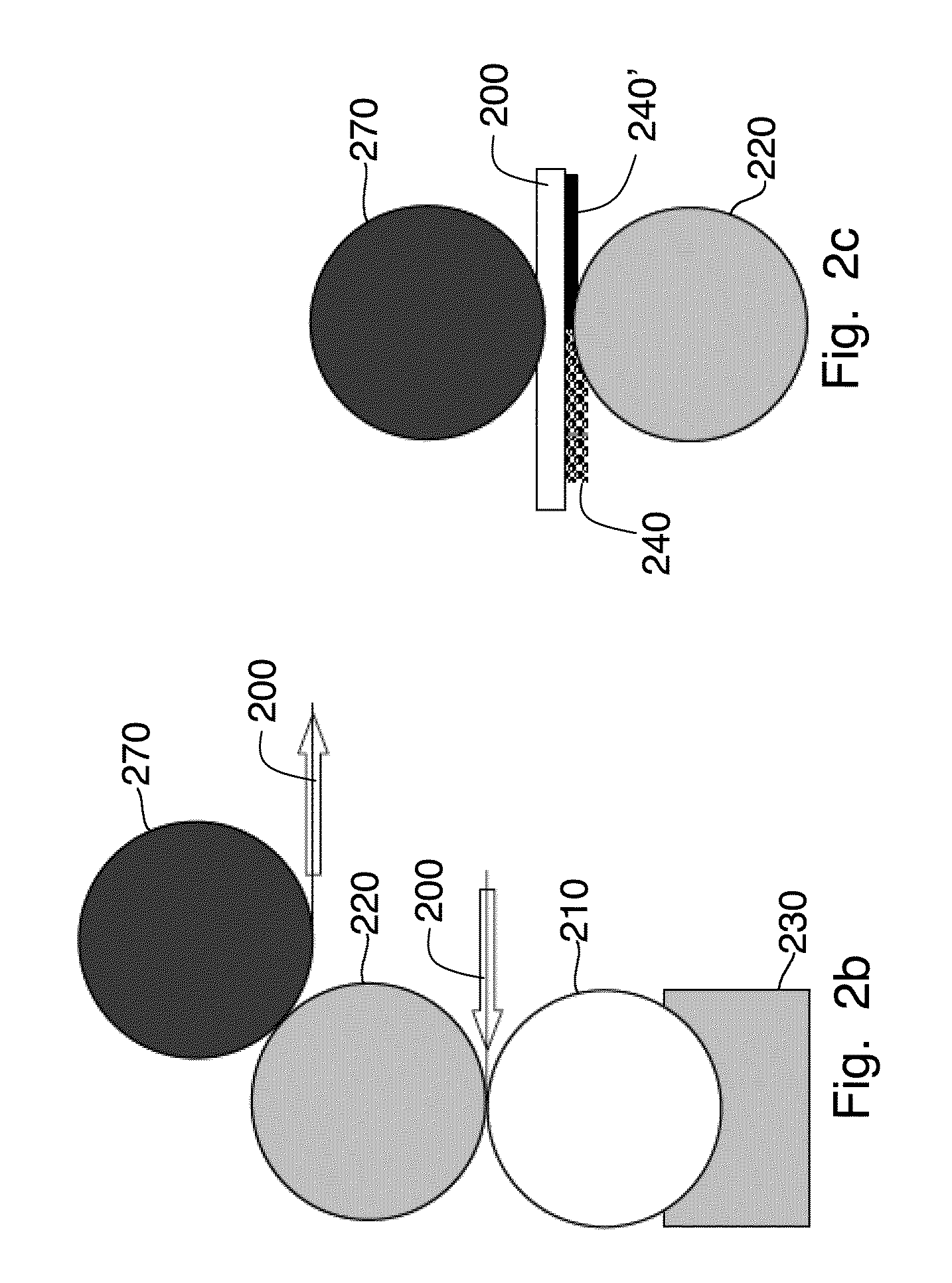Method and apparatuses for printing and printed product
a technology of printed products and methods, applied in the field of printed conductive patterns, can solve the problems of discontinuity structure, slow method, and inability to meet the requirements of porous substrates and/or web-based substrates, and achieve the effects of high resolution and throughput, efficient and relatively simple, and high resolution
- Summary
- Abstract
- Description
- Claims
- Application Information
AI Technical Summary
Benefits of technology
Problems solved by technology
Method used
Image
Examples
Embodiment Construction
[0045]The present method arises from the finding that microparticles can be deposited and permanently affixed to on various substrates, at the same time increasing the conductivity of the pattern deposited. This is achieved by the successive transfer and nip sintering steps. Depending on the deposition method used, no intermediate stages are required (if particles deposited in dry form), or a drying stage for the deposited material is employed (if particles deposited in a liquid suspension).
[0046]The method according to the invention is suited inter alia for dry-state conductive (including semiconductive) microparticles in powder form. This embodiment is disclosed in detail below. The conductive particles may be metallic, polymeric, or a combination thereof. The resolution of the created structures is strongly dependent on the particle size of the powdered material, whereas in the deposition and sintering processes the composition of the material is of importance. According to our s...
PUM
| Property | Measurement | Unit |
|---|---|---|
| particle size | aaaaa | aaaaa |
| particle size | aaaaa | aaaaa |
| pressure | aaaaa | aaaaa |
Abstract
Description
Claims
Application Information
 Login to View More
Login to View More - R&D
- Intellectual Property
- Life Sciences
- Materials
- Tech Scout
- Unparalleled Data Quality
- Higher Quality Content
- 60% Fewer Hallucinations
Browse by: Latest US Patents, China's latest patents, Technical Efficacy Thesaurus, Application Domain, Technology Topic, Popular Technical Reports.
© 2025 PatSnap. All rights reserved.Legal|Privacy policy|Modern Slavery Act Transparency Statement|Sitemap|About US| Contact US: help@patsnap.com



